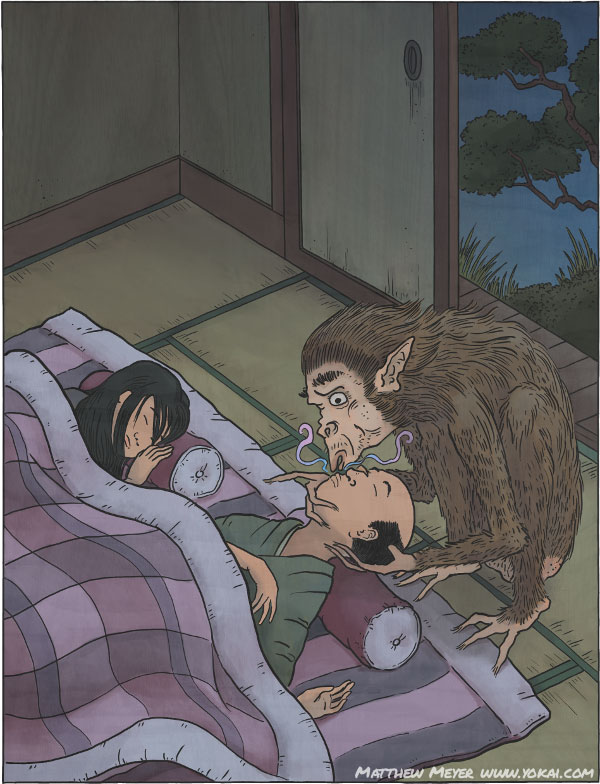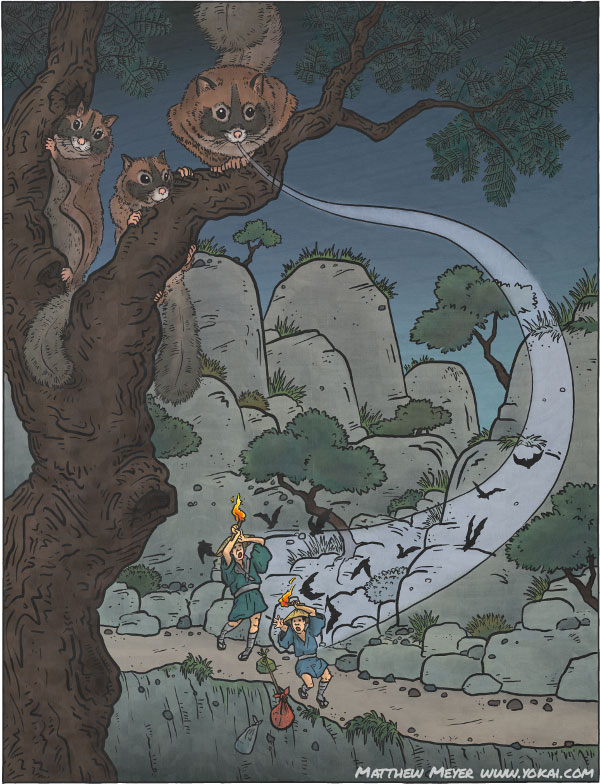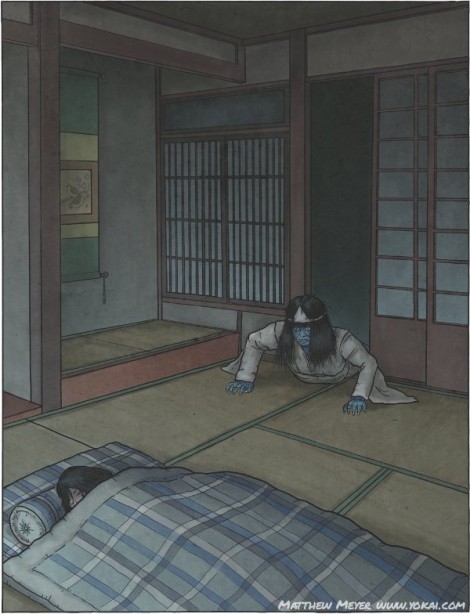Today’s yokai is not cute, but it should make you laugh. In fact, its name is the sound of laughter (“heehee!”).
A lot of these animal yokai originated in China and were re-invented by Japanese encyclopedia writers during the Edo period. This is one such yokai. The boom in printing production during the late 18th century caused a huge rise in literacy as well as cheap, illustrated books for the masses. Because it was difficult for Japanese to travel, they often collected books full of pictures of distant lands, and full of stories and tales from those places. The authors of this period translated and reinterpreted older Chinese texts, often giving the creatures a distinctive Japanese identity through their reinterpretations. Other authors did their best to remain faithful to the source material, but nonetheless made mistakes (as we will see later this month, one author mistook a Chinese general for the Chinese god of the toilets, and a strange new yokai was born—but I digress).
Like some other other beast-yokai (baku, kirin, wani, and a few others), this creature eventually ended up lending its name to a real-world animal. Today, the word hihi means “baboon” in Japanese. It’s not so difficult to see the resemblance!
Click here or on the image to view the full entry on yokai.com!






